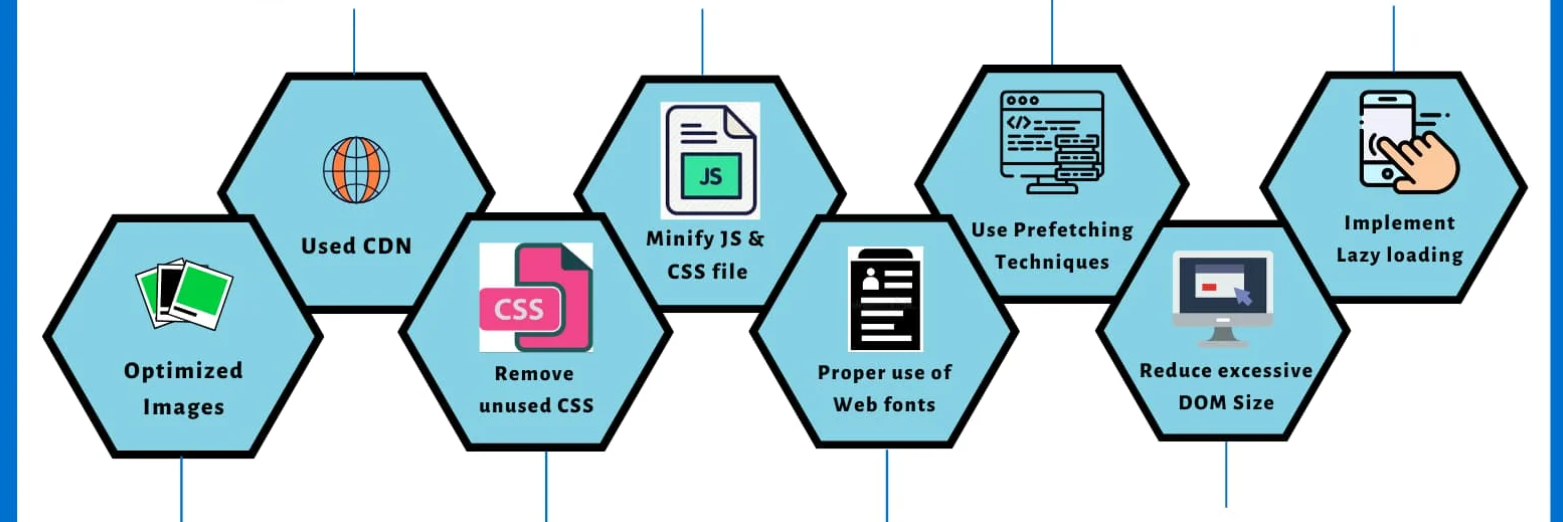Case Journeys
Exploring intriguing stories and insights from around the world.
Speed Demons: Outpacing the Competition with Web Performance
Unleash your website's potential! Discover tips and tricks to outpace the competition with lightning-fast web performance.
10 Key Metrics to Measure Web Performance and Outpace Your Competition
In today's digital landscape, understanding web performance is essential for any business looking to stay competitive. By measuring the right metrics, you can gain insights into how well your website is performing and identify areas for improvement. Here are 10 key metrics that can help you evaluate your site's performance:
- Page Load Time
- First Contentful Paint
- Time to First Byte
- Mobile Responsiveness
- Bounce Rate
- Conversion Rate
- Session Duration
- Traffic Sources
- User Engagement
- Server Response Time
Tracking these metrics can give you a significant advantage over your competitors. For instance, a faster page load time can enhance user experience and reduce bounce rates, while monitoring bounce rates can help you understand user engagement levels. By employing tools like Google Analytics or GTmetrix, you can gather data on these metrics, analyze them, and make informed decisions to ensure your site remains competitive.

How Website Speed Impacts User Experience: What You Need to Know
Website speed plays a crucial role in shaping the overall user experience. With internet users becoming increasingly impatient, research shows that even a one-second delay in loading time can lead to significant increases in bounce rates. A slow website frustrates users, impedes navigation, and ultimately drives potential customers away. According to a study by Google, nearly 53% of mobile site visitors abandon sites that take longer than three seconds to load. Therefore, optimizing your website speed is not just a technical necessity but a fundamental aspect of retaining your audience and converting visits into actions.
Moreover, the implications of slow loading times extend beyond user satisfaction; they can also negatively impact your website’s SEO rankings. Search engines like Google consider page speed as a critical factor in determining search rankings. A faster website enhances the overall performance scores, making it more likely to appear higher on search engine results pages (SERPs). Thus, investing in improving website speed not only enhances user experience but also supports your site’s visibility and authority on the web.
Is Your Site Fast Enough? A Guide to Assessing and Improving Web Performance
In today's fast-paced digital world, web performance is crucial for both user experience and search engine optimization (SEO). Analyzing your site's speed is the first step to understanding its performance. Tools like Google PageSpeed Insights and GTmetrix provide insights into how quickly your pages load and offer actionable suggestions for improvement. Aim for a loading time of under 3 seconds, as studies have shown that slow websites lead to higher bounce rates and decreased conversions. To gauge your current performance, simply enter your site's URL into these tools and review the scores and recommendations provided.
Once you've assessed your site, the next step is to implement strategies to enhance web performance. Here are a few key techniques to consider:
- Optimize images: Compress images to reduce their file size without sacrificing quality.
- Minimize HTTP requests: Combine CSS and JavaScript files to reduce the number of requests made to the server.
- Utilize caching: Enable browser caching to store frequently accessed resources, allowing users to retrieve them more quickly.
For additional insights, you can refer to Web.dev's guide on creating fast web experiences. Regularly monitoring and improving your site’s speed not only enhances user satisfaction but also boosts your SEO rankings.